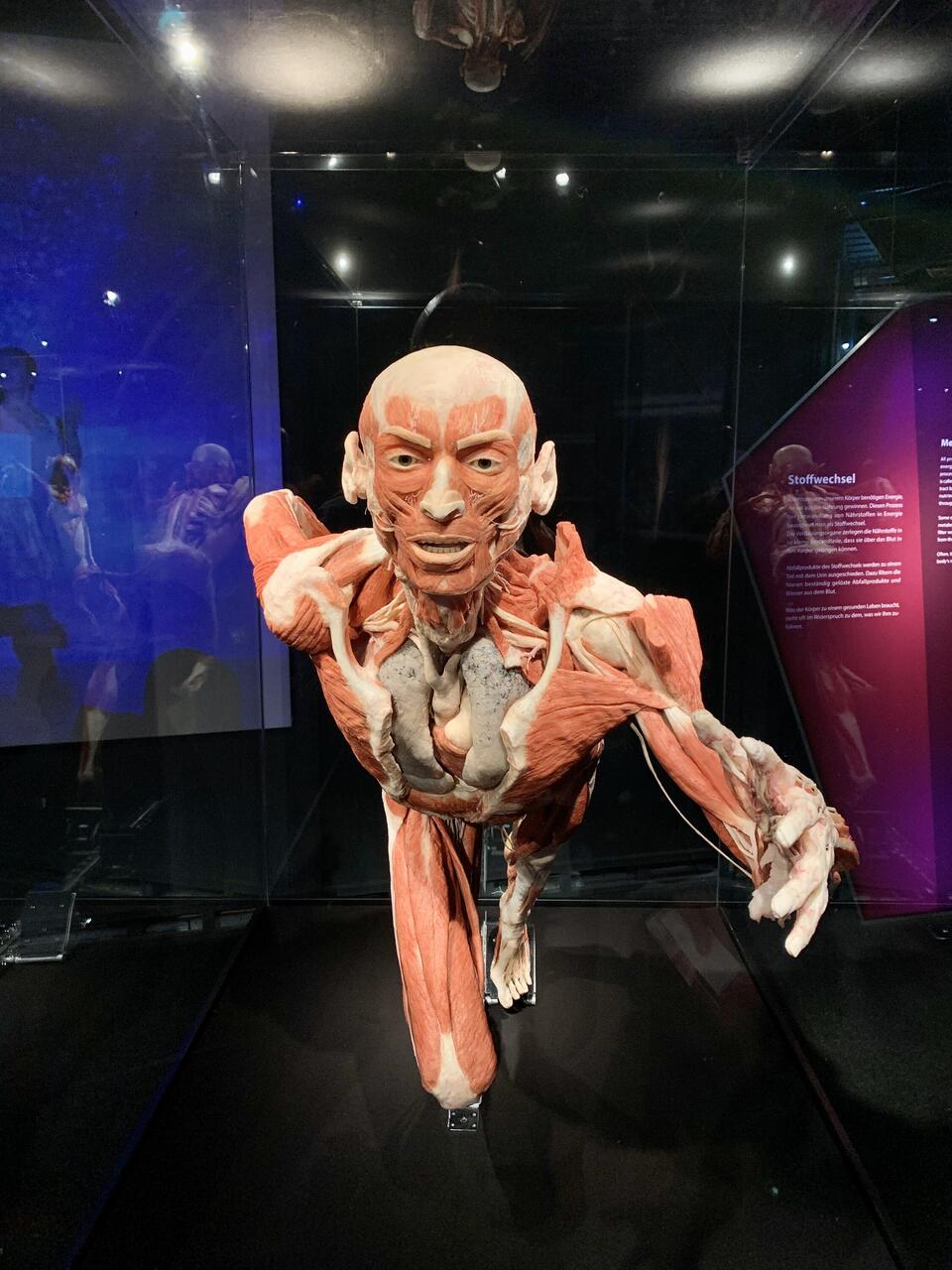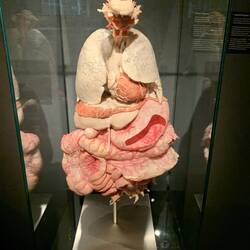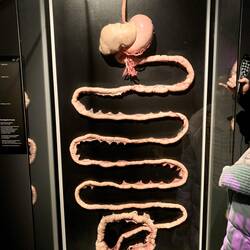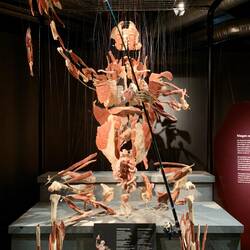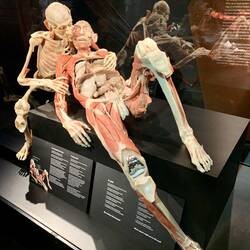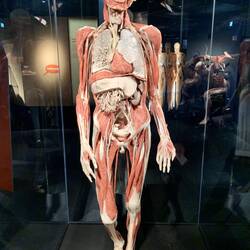Skywalk (cont’d)
 July 27, 2022 in Malaysia ⋅ ☁️ 27 °C
July 27, 2022 in Malaysia ⋅ ☁️ 27 °C
There were 3-4 of these large structures which gave you an extra dimension to viewing the wildlife.
The jungle is always thriving and gives you the perception of perpetual growth.
With the humidityRead more
Forest Skywalk
 July 27, 2022 in Malaysia ⋅ ⛅ 31 °C
July 27, 2022 in Malaysia ⋅ ⛅ 31 °C
This has been a relatively recent initiative by the Malaysian government to expand the tourist experience.
This park is very busy with lots of different types of bird life however we visited in theRead more
Wildlife Resort
 July 27, 2022 in Malaysia ⋅ ⛅ 31 °C
July 27, 2022 in Malaysia ⋅ ⛅ 31 °C
We stopped at a ecotourism resort that provided a lovely lunch before travelling to the skywalk.
There were many private chalets dotted around the complex and it seems that ecotourism is a veryRead more
Sun Bear Conservation Park
 July 27, 2022 in Malaysia ⋅ ⛅ 31 °C
July 27, 2022 in Malaysia ⋅ ⛅ 31 °C
Located in the same area is the Sun Bear rehabilitation facility.
These bears are the smallest of all the bear species and are only found in this region of Malaysia 🇲🇾.
Tragically this bear hasRead more
Orangutans
 July 27, 2022 in Malaysia ⋅ ⛅ 31 °C
July 27, 2022 in Malaysia ⋅ ⛅ 31 °C
The Orangutans have a varied diet of fruits and other edible plants they also will eat the external tubes of earthworm castings as this is high in essential minerals that the apes require to stayRead more
Sabah & The Orangutans
 July 27, 2022 in Malaysia ⋅ ☀️ 30 °C
July 27, 2022 in Malaysia ⋅ ☀️ 30 °C
We arrived at Sabah and were transferred to a lovely hotel only a short drive from the Orangutan 🦧 wildlife park.
The park is 47 square kilometers in size and is the destination for most of theRead more
Flying to Sabah
 July 26, 2022 in Malaysia ⋅ ⛅ 30 °C
July 26, 2022 in Malaysia ⋅ ⛅ 30 °C
Whilst I only took one photo of us boarding the plane with Leisa and her supplies. The plane trip was significant for another reason…it was the only time I have ever seen two people go into anRead more
KL Goodbye
 July 26, 2022 in Malaysia ⋅ ☁️ 25 °C
July 26, 2022 in Malaysia ⋅ ☁️ 25 °C
After visiting the market we made our way back to the bus en route to the airport.
Because Islam is the main religion in Malaysia there are lots of mosques 🕌 and they are characterized mostly byRead more
Market
 July 26, 2022 in Malaysia ⋅ ☁️ 26 °C
July 26, 2022 in Malaysia ⋅ ☁️ 26 °C
Apparently KL has a plethora of markets around the city and we visited one that was indeed in the heart of the city.
Our guide shared that we should prepare ourselves for the different ways of foodRead more
Old Dutch Church
 July 25, 2022 in Malaysia ⋅ ⛅ 30 °C
July 25, 2022 in Malaysia ⋅ ⛅ 30 °C
This was the most impressive part of the trip to Melaka. It was an old Dutch Church that once held the grave of St Francis Xavier.
I believe the building is dated around the 1600 and now is but aRead more
Old Dutch Sector (cont’d)
 July 25, 2022 in Malaysia ⋅ 🌧 27 °C
July 25, 2022 in Malaysia ⋅ 🌧 27 °C
The first picture in the series is my Malay desert all mixed up which was the last dish we ate at a Malay Chinese restaurant. It certainly doesn’t look appetizing in the photo but when the dishRead more
Old Dutch Sector
 July 25, 2022 in Malaysia ⋅ 🌧 26 °C
July 25, 2022 in Malaysia ⋅ 🌧 26 °C
This section of Melaka was initially discovered by the Dutch who colonized this area first. Melaka it seems was a city of conflict between the Dutch, the Portuguese and then the English.
As a resultRead more
Mosque on Stilts
 July 25, 2022 in Malaysia ⋅ ☁️ 30 °C
July 25, 2022 in Malaysia ⋅ ☁️ 30 °C
We had the opportunity to visit a mosque that has been built out from the beach.
Before we could enter the mosque it was appropriate for all of us to take off our shoes before entering the mosque asRead more
Melaka
 July 25, 2022 in Malaysia ⋅ ⛅ 28 °C
July 25, 2022 in Malaysia ⋅ ⛅ 28 °C
We took a day trip to Melaka which is a traditional trading port in the early history of Malaysia.
It has a rich history of conquest and colonisation by the English, Dutch and Portuguese.
Eco Park
 July 24, 2022 in Malaysia ⋅ ⛅ 29 °C
July 24, 2022 in Malaysia ⋅ ⛅ 29 °C
This eco park has been constructed within a pocket of original rainforest that still exists in the city of KL.
Although we didn’t see them the space is home to about 5 monkey families. Walking intoRead more
KL Tower
 July 24, 2022 in Malaysia ⋅ ⛅ 27 °C
July 24, 2022 in Malaysia ⋅ ⛅ 27 °C
The KL tower is one of the tallest buildings in Kuala Lumpur and is situated in a preserved area of rain forest 🌳 right in the middle of the city.
It rises some 356 metres into the air and at oneRead more
Morning Walk
 July 24, 2022 in Malaysia ⋅ ⛅ 27 °C
July 24, 2022 in Malaysia ⋅ ⛅ 27 °C
We walked from the hotel and Chris volunteered to be the map guide which was great.
We decided to walk to the KL tower and also experience the local eco walk which is close by.
Staying at five starRead more
Home Base
 July 23, 2022 in Singapore ⋅ ☁️ 10 °C
July 23, 2022 in Singapore ⋅ ☁️ 10 °C
Ready for another adventure with the Chasers!
Bring on Malaysia 🇲🇾 and Borneo and the orangutans 🦧.
Stop over at Singapore 🇸🇬 for brief respite and then onto Kuala Lumpur population ofRead more
Travelling to Bristol
 December 23, 2019 in England ⋅ ⛅ 4 °C
December 23, 2019 in England ⋅ ⛅ 4 °C
Well here we are waiting for a delayed flight to Bristol after convincing Jen that we really should take a taxi instead of running all over Germany trying to work out the train routes with our casesRead more
Topographie des Terrors
 December 22, 2019 in Germany ⋅ ☁️ 4 °C
December 22, 2019 in Germany ⋅ ☁️ 4 °C
This was one of the more confronting tours as it was a museum dedicated to the horrors of the Gestapo and the increasingly fascist police state that existed from 1933-1945.
The buildings that housedRead more
Reishtag Dinner
 December 21, 2019 in Germany ⋅ ⛅ 4 °C
December 21, 2019 in Germany ⋅ ⛅ 4 °C
The term Reichstag, when used to connote a diet, dates back to the Holy Roman Empire. The building was built for the Diet of the German Empire, which was succeeded by the Reichstag of the WeimarRead more
Plastination Display
 December 21, 2019 in Germany ⋅ 🌙 5 °C
December 21, 2019 in Germany ⋅ 🌙 5 °C
Plastination is a technique or process used in anatomy to preserve bodies or body parts, first developed by Gunther von Hagens in 1977. The water and fat are replaced by certain plastics, yieldingRead more
Stasi Museum (cont’d)
 December 21, 2019 in Germany ⋅ ☀️ 8 °C
December 21, 2019 in Germany ⋅ ☀️ 8 °C
The centrepiece of the exhibition is the office and working quarters of the former Minister of State Security – i.e. head of the Stasi – Erich Mielke. The museum is operated by theRead more
Stasi Museum
 December 21, 2019 in Germany ⋅ ⛅ 8 °C
December 21, 2019 in Germany ⋅ ⛅ 8 °C
One has to see it to believe it but the level of intrusion into the lives of every citizen of the GDR is mind boggling.
The Stasimuseum is located in House 1 on the former grounds of the headquartersRead more
World Clock
 December 21, 2019 in Germany ⋅ ⛅ 7 °C
December 21, 2019 in Germany ⋅ ⛅ 7 °C
The sixteen ton world clock was opened to the public on 30 September 1969, shortly before the twentieth anniversary of the German Democratic Republic, along with the Berlin TV Tower (Fernsehturm). TheRead more
Berlin TV Tower (cont’d)
 December 21, 2019 in Germany ⋅ ⛅ 7 °C
December 21, 2019 in Germany ⋅ ⛅ 7 °C
The tower allows people to observe the city of Berlin on a 360 degree basis and some of the photos depict the different angles of the city.
Walking around Berlin really reminds me of how East BerlinRead more
















































































































































